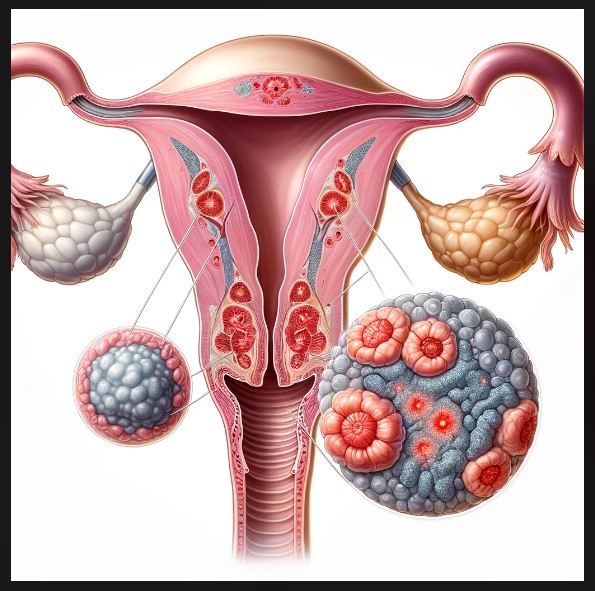Cervical cancer develops in the cervix, which is the lower part of the uterus that connects to the vagina. Here’s a breakdown of what happens:
1. Cellular Changes:
- It all starts with abnormal cell growth on the cervix. This is caused by persistent infection with certain types of human papillomavirus (HPV), typically high-risk strains.
- Not all HPV infections lead to cancer, and the body’s immune system usually clears the virus. However, in some cases, the virus lingers and triggers these abnormal cell changes.
2. Precancerous Stage:
- These abnormal cells are initially precancerous, meaning they haven’t yet turned into cancer. This stage is called cervical dysplasia or cervical intraepithelial neoplasia (CIN).
- Early detection through regular screening (Pap tests and HPV tests) is crucial at this point. Treatment of these precancerous cells can effectively prevent cancer development.
3. Progression to Cancer:
- If left untreated, precancerous cells can continue to grow and change over time, eventually developing into invasive cervical cancer.
- This cancer can then spread to nearby tissues and, in advanced stages, to other parts of the body like the lungs, liver, or lymph nodes.
Symptoms of Cervical cancer
- In its early stages, cervical cancer often shows no symptoms.
- As the cancer progresses, possible symptoms include:
- Unusual vaginal bleeding (after sex, between periods, after menopause)
- Watery or bloody vaginal discharge with a foul odour
- Pelvic pain during sex or urination
- Pain in the lower back or legs
Treatment
- Treatment options for cervical cancer depend on the stage and severity. Options may include:
- Surgery to remove the cancerous tissue
- Radiation therapy
- Chemotherapy
- Targeted therapy drugs
Prevention
- The good news is that cervical cancer is largely preventable. Here are key steps:
- HPV vaccination: Getting vaccinated against HPV significantly reduces the risk.
- Regular screening: Pap tests and HPV tests help detect precancerous changes early.
- Safe sex practices: Using condoms can help reduce HPV transmission.
This is a general overview, and it’s crucial to consult a healthcare professional for personalized information and guidance. They can discuss your risk factors, recommend appropriate screening, and address any concerns you may have.






Посуда для кухни: профессиональные обзоры и руководство по выбору
посуда для дома [url=http://www.lenta.ru/conf/krichever]http://www.lenta.ru/conf/krichever[/url] .